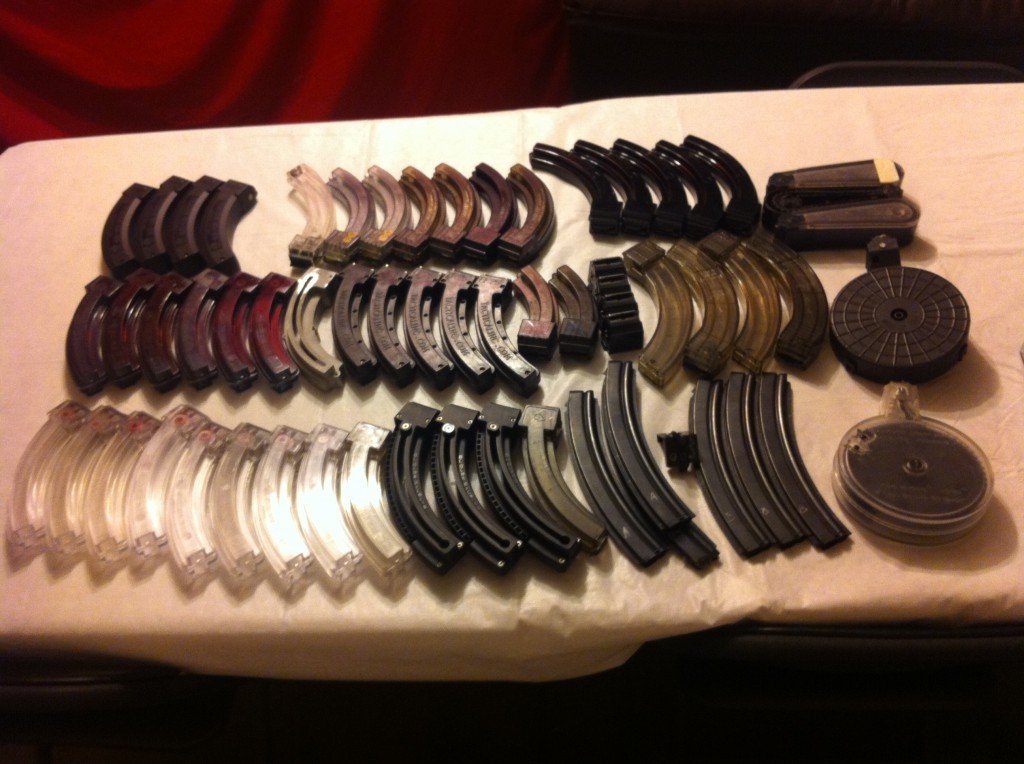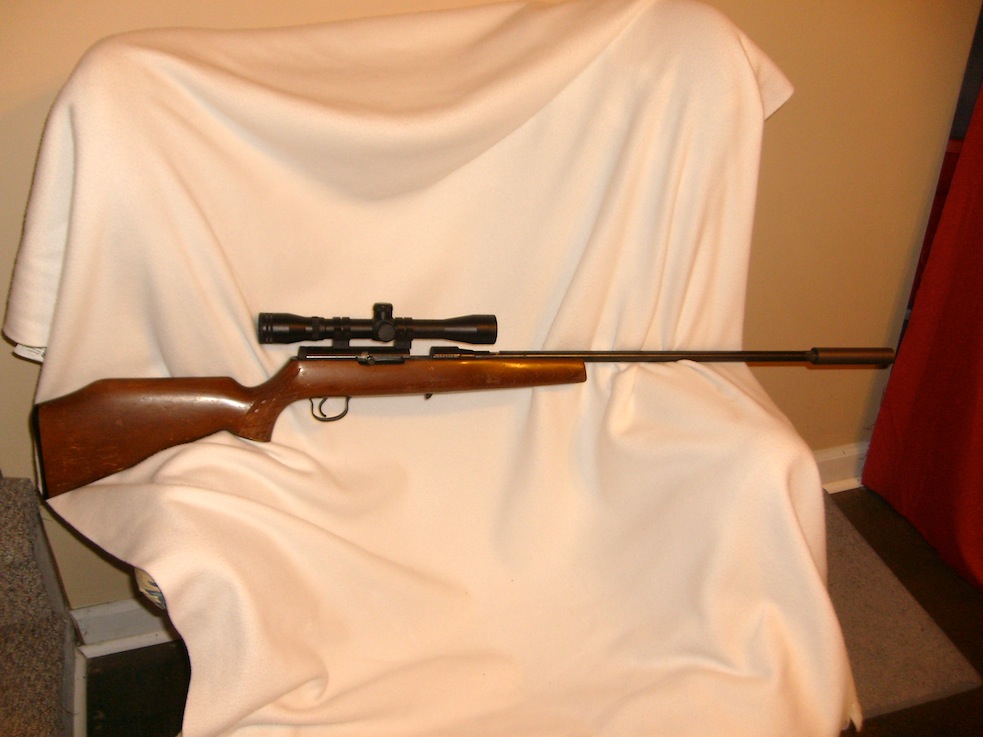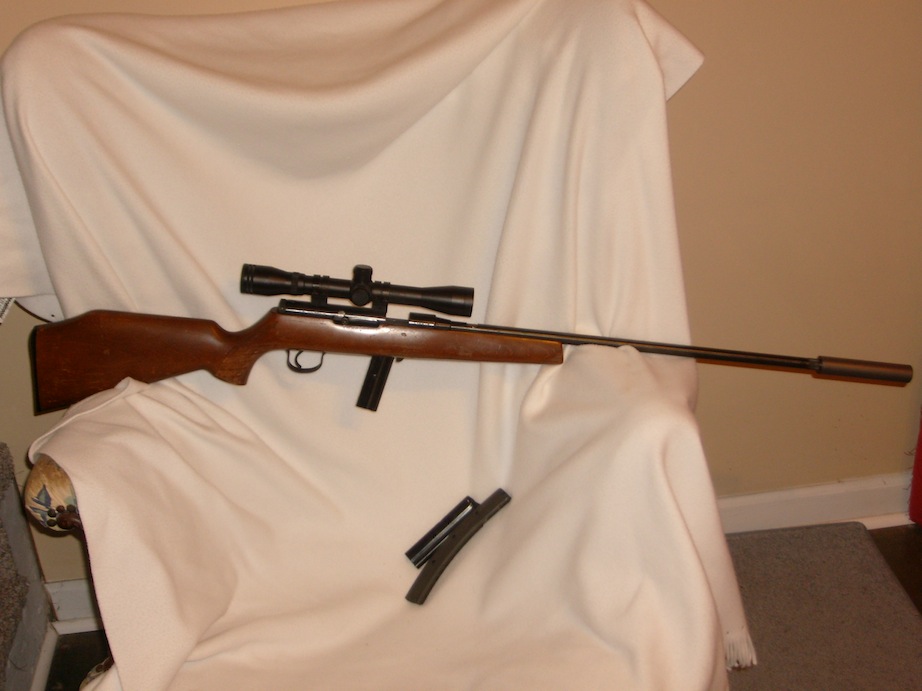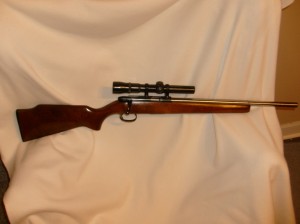Category: Rifles
In my ever continuing quest to find the best 10/22 magazines, I’ve tested a bunch of them.
The list isn’t complete, there are a number of mags that I haven’t tried, mostly due to time and budget constraints. My testing is somewhat systematic, but far from scientific.
The short version: The BX25 remains the most reliable magazine over 10 rds capacity that I have tested. Some other mags come close, but the BX25 would be what I would grab if I needed max reliability.
The Long Version:
For the last several years, I’ve been keeping a spreadsheet where I’ve tracked the reliability of the 10/22 mags that I’ve been using. I’ve tracked only magazines fired by myself, and not counted magazines fired by other users (in case their technique played a factor etc.) Failures because of bad ammo weren’t counted against the magazines.
Any magazine that I only tested a single example of should be considered only for anecdotal value, as every brand produces the occasional lemon. Further testing would be required before I would be happy with the results of those.
Reliability Results, in no particular order:
(25 rd) Ruger Bx-25 (4 mags tested) Avg reliability 99%+/-
(25 rd) Butler Creek Steel lips Clear (9 tested 1 problematic) Avg reliability (minus 1 problem mag) 96% +/- (Problem mag averaged less than 60% reliability)
(25 rd) Butler Creeek Steel lips smoke (6 tested) Avg reliability 96% +/-
(30 rd) Ram-line 30 rd Double stack Pre-ban (4 tested) Avg reliability 95% +/- (This was shocking to me based on their terrible reputation, but I had good experiences with them)
(25 rd) Ram-line “Truncator” single stack (1 tested) 0% reliability (literally wouldn’t properly feed a single round, inclluding the truncated cone ammo it was designed for)
(30 rd) Ram-line single stack (opaque black, 5 tested) Avg reliability 25%+/-
(50 rd) Ram-line double stack (7 tested) Avg Reliability 35% +/-
(25 rd) HC3R single stack (3 tested) Avg reliability 90% +/-
(30 rd) Eagle mags (Pre Ban, 4 tested) Avg reliability 50% +/-
(25 rd) Butler Creek “Hot Lips” (1 tested) Reliability 85% +/-
(25 rd) Tactical Inc TI 25 Composite (5 tested) Avg reliability 92% +/-
(30 rd) Bingham Steel magazines (6 tested) Avg reliability 90% +/- (Tried with 3 different adapters, results very similar, though the adapters differed slightly)
(50 rd) MWG / Mitchell Teardrop (Pre-ban, 3 tested) Avg reliability 50% +/- (All the ones I tested were old. Others have had great luck with them, I didn’t)
(50 rd) Pro-Mag drum (1 tested) Reliability 25% +/-
(50 rd) AMT drum (Pre Ban, 1 tested) Reliability 25% +/- (This old drum was modified at some point in the past, not a great example)
(50 rd) Custom billet aluminum double stack (no markings 1 tested) Reliability 65% +/- (This is an odd magazine, likely someone’s shop project, well made, but modified at some point down the line)
Most of the mags I’ve tested:

In the end, I boxed up all the mags that averaged less than about 90% reliability, and Only use the most reliable mags.
August 19, 2014 Tony 0 Comments
I haven’t been able to do much shooting the last few weeks due to inclement weather, and various obligations (like paying the bills…) so I took a few minutes tonight to snap a few pics of some more of my suppressor hosts.
I’ve posted about most of these before, but I figured having some better photos and talking about why I like them would be better than not doing anything at all.
I originally built this ruger charger type pistol to test barrels and such for the long awaited SBR build that I completed recently. Once I was done with the testing, I added a few parts, and built this little gun. It’s quite accurate for such a short barrel, mostly due to the Kidd barrel, but it’s also a reasonable suppressor host. I say reasonable instead of great, because the Kidd barrel is just a bit too long to keep the cheap bulk ammo subsonic, so it’s louder than it would be if the barrel was an inch shorter.

This Contender G2 hasn’t really been talked about a lot yet, but it’s really a great host. Being a single shot, there’s no action noise aside from the hammer falling, and no ejection port noise either. The 16.25″ barrel requires subsonic ammo, like any other .22 rifle, to stay quiet, but it’s very accurate, and I’ve used it to shoot pests out at the old family homestead without annoying the neighbors.

The Walnut stocked Ruger 10/22 started life as a standard pre-warning gun. I still have all of the original parts I took off (barrel and trigger assembly) but I wanted something I could shoot with the suppressor and open sights, so I built the gun using the 21″ custom made SS barrel, and put a polymer trigger group on the rifle because it was already built with the auto bolt release, extended mag release and 2# trigger. I like the rifle a lot, but haven’t had a lot of opportunity to shoot it, as I’ve been working with other guns since I built it.

I’ve talked about this flamed out bump-fire .22 rifle before on the blog, but I don’t think I ever got a picture with the can attached. The Tac-Sol barrel of course is amazing, and pretty central to the build.

January 23, 2014 Tony 0 Comments
A few weeks before Christmas, I took Kevin (my occasional camera man) to the range, and we did some shooting.
There was no particular theme to the evening shooting, but we got a little video of a few of the suppressor hosts in action. In particular, the Mauser 105 that I’ve talked about repeatedly, and the TC contender rifle.
As always, both guns were exceptionally quiet, and very nice hosts. Almost all the shooting was with CCI standard ammo, but the smith 422 shooting was with old stash CCI blazer. Here’s the video for your enjoyment:
January 21, 2014 Tony 0 Comments
About a year and a half ago, I bought my first bumpfire stock. It was around the same time that I bought my first machine gun. Of course, buying them at the same time meant that I had the bumpfire stock for almost a year before having my machine gun.
The bump fire stock I chose was the Fostech AA2 springless for the Ruger 10/22. It’s the updated version of the original Akins Accelerator stock. The original stock was approved for sale by the ATF, and then shortly thereafter reclassified as contraband. A number of folks lost their shirts and their cool on that deal. Several years later, Bill Akins made an arrangement with Judd Foster of Fostech, and the new and slightly less cool AA2 became available.
With the original AA, you simply pulled the trigger, and a spring mechanism would bump the trigger back and forth against your stationary trigger finger (this is why the ATF later changed their ruling). With the new version, your trigger finger remains stationary, as with the original, but instead of a spring moving the rifle forward and back, your off hand does by using the vertical fore grip.
At this point I have several of the AA2 stocks, but today I’m talking about one of the first ones I bought. Being young and impetuous, I decided that a .22 sounding like a machine gun might not draw enough attention on it’s own, so I had a local company hydrodip the stock with a flame pattern. The result is one of the visually louder guns that I’ve seen, and what is by far the most visually loud gun I have ever owned, and am ever likely to.

Over the course of the first year that I was messing with the AA2 stocks, I made several modifications that have added to the reliability and enjoyment. The first thing that I found to be important were the magazines. I only have 2 types of magazines that I would recommend for the AA2 guns; Ruger factory mags (BX1 or BX25) and Butler Creek “steel lips” magazines. Tactical inc TI25 magazines work as well, but are quite expensive in comparison and require tuning to make run properly. The HC3R magazines are alright, but don’t like the magazine quick loaders.
Another tweak that really helped with the guns reliability was to remove as much weight as possible. On the photo above the gun is wearing a Tactical Solutions X-ring barrel. The X-ring barrel is an aluminum outer shell with a steel sleeve in the middle that is the actual barrel. The construction provides heat dissipation and light weight. It weighs nearly a pound less than the factory barrel does! I’m also using a custom chamber reamer to chamber the barrels for any AA2 guns. A custom reamer isn’t needed though, just get a ‘sporting’ chamber reamer. The reason I use the reamer is to loosen the chamber slightly to improve extraction and feeding. A match chamber is great when trying to make the smallest group possible, but when attempting to shred pumpkins or knock over a row of steel plates, a loose chamber that causes fewer stoppages is much better.
The Kidd trigger assembly that comes as part of the Fostech kit is really an amazing piece of engineering. The trigger is light, but consistent, with the first stage providing a good tactile sensation to ensure you know you’re about to fire the gun.
If you listen close in the video, you can clearly hear the difference in rate of fire between the high velocity CCI minimags and the less powerful CCI standard velocity ammo.
December 23, 2013 Tony 0 Comments
After spending a little time at the range a few weeks ago with the Mauser 105, I am very pleased to report that the rifle will produce 1″ 10 shot groups at 50 yards consistently using CCI SV ammo, CCI blazer, and Aguilla SSS. The CCI SV was the best, averaging a little under 7/8″ for all 3 of the 10 shot groups I fired with it.
With the suppressor, using any type of subsonic or standard velocity ammo, the gun is just stupid quiet. I assume that the slight cushioning effect of the open bolt operation helps with that.
December 18, 2013 Tony 0 Comments
The Mauser 105 was made in Germany in the 80’s. It’s production started shortly after Mauser bought the german portion of Voere. The design is based on the earlier Voere 2005 rifle, and differs in only small details, such as the threaded barrel, and variation in sights.

It’s a .22 caliber semi auto with a 24″ barrel. From the factory the receiver was grooved for a scope (11mm or 3/8″) and has tangent rear and hooded front sights. My rifle has had both sights removed. The rear was removed to give clearance for the scope, and the front to make it look better since the rear was gone. I placed the sights in a baggie marked with what gun they’re from and put them in the back of the safe.
The muzzle is factory threaded with the european standard 1/2″x20 TPI. I’ve added an adapter to mine to allow the use of a 1/2″x28 TPI suppressor. The stock is beech or something similar, and mine has seen better days, but is solid and serviceable. Don’t let the picture fool you, it’s got a lot more scratches and dings than you see.
The problem I had with the rifle when I got it, was that it came without a magazine, and there are no magazines readily available for it. I’ve heard that a H&K model 270 magazine could be modified to work, but with the prices on those climbing to $100 or more, I decided to see if I could do something else. In the end, I opened up the magazine well in the trigger housing some, and modifying a Bingham model 20 magazine to fit. It functions pretty well, but I wouldn’t recommend the same thing to someone else, instead find the magazine for a Jennings J-22 and modify that to fit (I have a second 105 that I’ve done this with, it keeps the gun original that way)
The gun has been reliable with just about anything I’ve tried in it. CCI SV has proven quite accurate as well, though I haven’t tested anything else very extensively.
Now let’s talk about what makes this gun very different from most of the .22 semi auto rifles you’ll find at the range or at the local gun shop. The method of operation of most semi auto .22’s is simple, when you pull the trigger, the hammer strikes the firing pin, crushing the primer and firing the round. The recoiling case pushes the bolt back, cocking the hammer again. As the bolt closes, it strips another round from the magazine feeding it into the chamber, leaving the gun ready to fire another round.
The Mauser 105 is an open bolt semi auto. What that means is that when you pull the trigger, the bolt closes, stripping a round and feeding it, a raised ridge on the bolt face fires the round when the round is fully chambered. Then the recoiling case pushes the bolt back where it locks in place, ready to start again. The Open bolt system is very simple. There’s no firing pin and no extractor, in fact, the entire bolt is just one solid piece of machined steel with a bolt handle that screws into the side.
I have found that the little Mauser is lightweight, easy to shoot well, and with a suppressor, very quiet (with subsonic ammo). If you can find one, I think you’ll be pleased. I like mine so much that I bought a second one when I had the chance. Im glad I did, as I haven’t seen another one since.
UPDATED:
I realized I forgot to add a picture of the rifle with the magazines I’ve fitted the rifle for. These are two 15 round magazines and a 25 round mag.

November 19, 2013 Tony 0 Comments
Today, I’ll talk about a low dollar custom gun that’s been in my safe for several years. I was introduced to the idea of a small Remington action being converted to centerfire and chambered for a low pressure small diameter round some time ago by reading of a project undertaken by Col. Ed Harris. His rifle was a Remington model 580 with a new bolt head and barrel, and chambered in .32 ACP.
Within a year or two of that, I became aware of a Remington model 581 that had been converted to .32 S&W long. The previous owner had given up on the project, and I was able to purchase the gun for very little money.

The Remington 540, 580 and 590 series of rifles were significantly overbuilt for the rimfire cartridges they were chambered in. Having 6 locking lugs on the bolt, it’s no wonder that a number of people started converting them to higher zoot calibers. I still buy any that I can find for a reasonable price with an eye toward future conversions.
Back to the rifle at hand. As I mentioned, it was someone else’s abandoned project. Abandoned projects can be anything from awful, to wonderful, depending on the specifics. This one turned out wonderfully. When I received the rifle, it had no throat in the chamber, and poor bedding.
With a little bit of bedding work, and running a throating reamer of the proper diameter into the barrel, I suddenly found myself with a .32 caliber rifle that would put a hole wherever I wanted it to, every time. The gun regularly turns in groups of 1/4″ or less from a rest at 25 yards.
About the rifle: Remington 581 with floating bolt CF conversion, wire extractor, no ejector (makes keeping my brass easier) The rear of the bolt came from a 541 with it’s bent handle. The barrel is 17″ long and cut down from an Argentine Mauser barrel with 4 lands and grooves slugging at .311 in the groove. I size to .313. The barrel is pinned to the receiver with 2 cross pins and 2 set screws. The scope is a vintage weaver steel tube 1.5-4.5x variable with fine cross hairs.
If I was building the rifle myself from scratch, the only thing I would change would be that I would thread the receiver and barrel, and use a Sako type extractor. But beggars can’t be choosers, and with how well the rifle shoots in it’s current configuration, I would never think of messing with it!
September 18, 2013 Tony 0 Comments








